This is Part VII of an eight-part Northeast Wisdom Home Page Blog series that began on Sunday January 12, 2020, with posts every Sunday and Wednesday during the season of Epiphany. Look for the last post Wednesday, February 5th; and see links for previous postings and more at the end of this post. Please share your reflections in Comments!
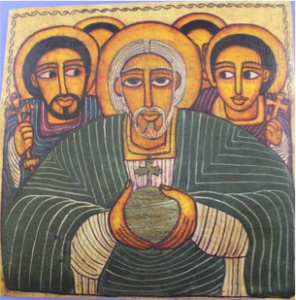
In Part VI, Cynthia continues with the history of consciousness, confessing her “profound honor” of both the Old and New Testaments, while sharing Barbara Brown Taylor’s answer to the question, “Where is God in this picture?” In light of a God who “is the web… (is) revealed in that singular, vast net of relationships that animates everything that is,” Cynthia goes further to say, “Scripture does indeed contain all things necessary to salvation, but only if we keep writing it. And to keep writing it means—as all the prophets from Abraham on have consistently proclaimed—to be willing to leave all known reference points behind in order to ride that arrowhead of evolution relentlessly toward the next unfolding.”
VII Seeing “Voir or périr,” wrote Pierre Teilhard de Chardin in his searing prologue to The Human Phenomenon: “See or perish.” In the end, it’s all about seeing. But maybe not so much about what we see, as how we see. And that has been my most surprising discovery in recent years: to discover that this great, elusive nondual reality may have more to do with an upgrade in the operating system than any change in spiritual state.
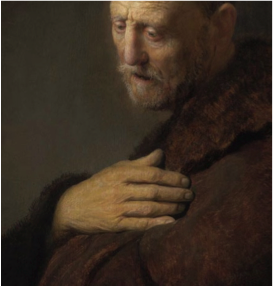
Like most everything else that’s come into my life in these past thirty years, it all started with Centering Prayer. I took up the practice in the late 1980s, but it took a long time—maybe five years—before I actually got what it was all about. Like most beginning meditators, I thought the goal was to make your mind still so that God could find a way in. I used my sacred word like a street sweeper to clear away all thoughts so that God could fill my emptiness with divine presence. Only gradually did I learn that the essence of the prayer lies in the simple letting go: the release of thoughts not in order to be filled with something else, but for its own sake, as a perfectly valid and whole spiritual gesture in its own right. I came to see it as the meditational equivalent of kenosis, or self-emptying, experienced not as a spiritual attitude but as an embodied practice.
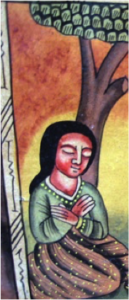
Once that corner was turned, a whole new horizon opened up. I began to notice that as I worked with this gesture, my attention was shifting lower in my body, moving out of my head and not onto but into my heart. By this I mean it was not a matter of thinking about my heart, but more an abiding in my heart, like a gradual, enfolding aliveness. I noticed that every time I went “out” of myself to think about something, this aliveness faded and I was back into cerebral mode again, back into inside and outside, subject and object. It was thus that I gradually came to think of contemplative prayer not simply as a “resting in God,” but as the gradual installation of a whole new system of perception…and upgrade in the operating system, as it were. I came to understand in a whole new way that classic Orthodox desideratum of “putting the mind in the heart.” The standard operating system on which rational consciousness and everything built on it rests is based on a “perception through differentiation” program. I am me by virtue of not being you. A cat is not a dog; God is not me. The playing field of perception is primordially organized into subject and object, inside and outside, like and unlike.
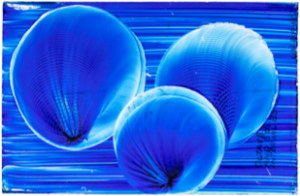
But this other, “mind in the heart” system runs a whole different program: perception through holographic unity, or an instantaneous perception of the larger pattern through sympathetic entrainment. The simplest analogy I can think of comes from music. When people are asked to sing a simple canon (like “Row, row, row your boat”), inexperienced singers will nearly always cover their ears so that the other musical parts don’t throw them off. But experienced singers realize that the whole song is a single harmonic unity and “lean into” the other parts in order to keep the rhythm and sing in tune. They are taking their bearings from the whole, which is what heart perception does. I began to learn that there has indeed been a whole tradition of this other kind of perception in the West, inaugurated most likely by Jesus’ simple one-liner “Blessed are the pure [i.e., undivided] in heart for they shall see God,” and reaching its most sublime articulation in Orthodox Hesychasm and Islamic Sufism. Here the heart is perceived not as the seat of the emotions but as an organ of spiritual perception, and practice concentrates on removing the impurities (chiefly vainglory and attachment) and strengthening the physical grounding so that this other, far more powerful and vivifying operating system can come fully online.
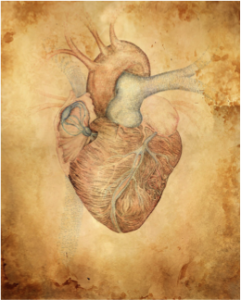
The modern Sufi master Kabir Helmisnski writes about this heart-centered perception in a passage so emblazoned on my own consciousness that it manages to show up in most every book I’ve written. “We have subtle subconscious faculties we are not using,” Helminski begins. “Beyond the limited analytical intellect lies a vast realm of mind that includes psychic and extrasensory abilities; intuition; wisdom; a sense of unity; aesthetic, qualitative, and creative faculties; and image-forming and symbolic capacities. Though these faculties are many, we give them a single name because they are operating best when they are in concert. They comprise a mind, moreover, in spontaneous connection with the cosmic mind. This total mind we call heart.” (Living Presence, p. 157) “This total mind we call heart….” Now there is a revelation—or perhaps a revolution!
Look for Cynthia’s last post in this series, “I Am Not a Space that God Does Not Occupy: Part VIII: The Eye of the Heart” Wednesday February 5, 2020 here on the Northeast Wisdom Home Page Blog. You may click on these links to go to “Part I: The Light Within,” “Part II: Panenthesim,” ” Part III: Panikkar,” “Part IV: Jesus Was Not a Monotheist(!?)” and “Part V: A Brief History of Consciousness” and “Part VI: A Brief History of Consciousness, continued.”
“May this “year of perfect vision” indeed shed some new light.
As the new decade gets underway, it feels like an appropriate moment to share one of my earlier essays, which is still to my mind one of the best things I’ve ever written. It was originally published in the 2018 anthology, how I found GOD in everyone and everywhere… Enjoy! And Happy New Year!!!
“how I found GOD in everyone and everywhere is an anthology of spiritual memoirs, edited by Claremont School of Theology faculty members Andrew M. Davis and Philip Clayton and published by Monkfish, our intrepid publishing partner here in Northeast Wisdomland! Compiled in honor of Marcus Borg, this anthology is broadly structured around the theme of Panentheism and features the usual suspects among Christian nondual teachers, including my colleagues Richard Rohr, Matthew Fox, and Ilia Delio. It’s well worth a read in its entirety.”
~ Cynthia Bourgeault, January 2020
We look forward to the conversation continuing in Comments!
Read other posts in the series:
“I Am Not a Space that God Does Not Occupy”

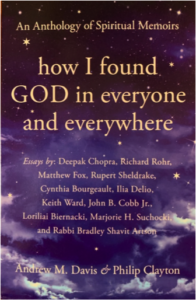
Another wonderful explication Cynthia! Your excellent writing brings into focus spiritual truths in a way the average Christian can understand. As a heart sister who also has spent decades focused on these very topics, may I invite you to reconsider your statement of the heart as NOT the the seat of emotions, but rather the organ of spiritual perception. If you step beyond the either/or framework into the both/and perception of heart mind it is more accurate to say the heart is BOTH the seat of emotion AND the organ of spiritual perception. Emotion has been so misunderstood in our culture that we often fail to appreciate its importance. E-motion understood as our sensory perception of life energy movement clarifies it’s actual function. It is with the heart’s frequency perception that we experience and calibrate our life energy to synchronize the dimensions of our being into coherent wholeness, which then feels to us as peace. Thank you so much for wrestling with these things in theological terms to make them available within the context of Christianity.
The mind is an expression of total mind, total mind is an expression of heart, heart is an expression of Heart. Human consciousness is an expression of Supreme Consciousness. Human being is an expression of Divine Being. I am is an expression of I Am who I Am.